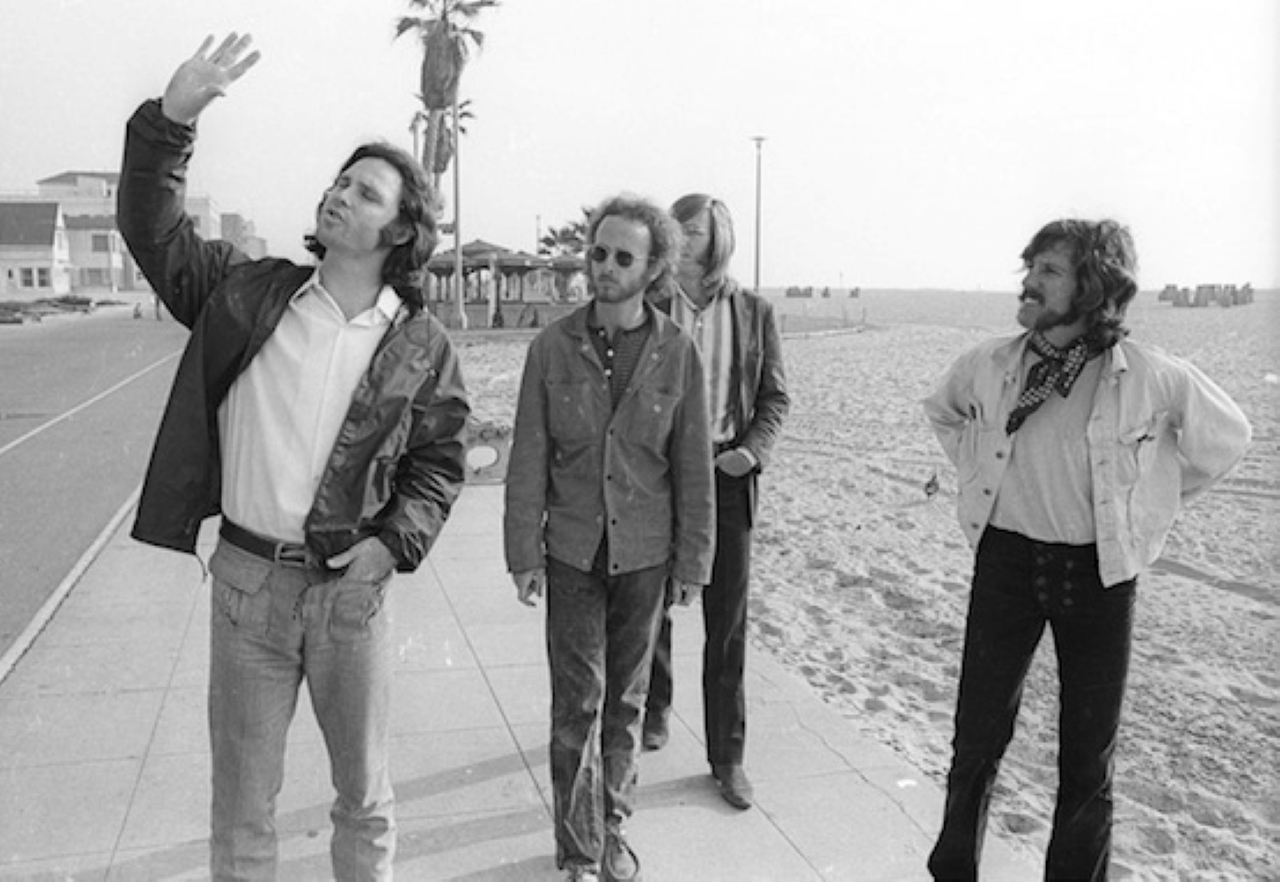🌟 A New Direction
By the end of 1968, The Doors were beginning to feel trapped by their own reputation. They were the band of dark poetry, improvisational chaos, and psychedelic danger — but after two albums full of mysterious lyrics and long stage jams, even Jim Morrison felt like it was time for something different.
During the sessions for their third album, The Soft Parade, guitarist Robby Krieger brought in a song unlike anything they had recorded before: upbeat, romantic, and surprisingly accessible.
The working title was “Hit Song” — and it would eventually become “Touch Me.”

💡 Robby Krieger’s Love Song
Unlike many Doors tracks born from Morrison’s notebook of surrealist poetry, Touch Me came from Robby Krieger’s personal life. He had just gotten married and wanted to write something that spoke to intimacy and affection. The original draft was more mellow, but the band sensed it could become something bigger.
Morrison agreed to sing it — even if it didn’t sound like The Doors at all — on one condition: “As long as we keep it raw in the studio. No sugar coating.”
He would soon discover that “raw” was not exactly where the song was headed.
🎼 Enter the Orchestra
Producer Paul A. Rothchild thought the song had huge potential — but only if it was dressed in something bold. He contacted arranger Paul Harris and suggested adding a full brass and string section, hoping to give the track a cinematic, almost Sinatra-styled energy.
Suddenly, The Doors had a 15-piece orchestra and a saxophone soloist in the studio.
It was the first (and only) time the band would record with a full horn and string arrangement.
Ray Manzarek once said, “It felt like we had walked into a completely different genre… and yet somehow it still sounded like us.”
🎤 Morrison’s Smoothest Performance
Rather than growling or chanting as he often did in their live shows, Morrison delivered the vocal with an elegant, almost crooner-like tone. He sounded confident and seductive, moving over the melody as if he had been singing pop standards his entire life.
There is still a little danger in his delivery — that tension between control and wildness — but it’s polished, smooth, and strangely intimate.
You can almost hear the difference in his voice: this is not the Lizard King.
This is Jim Morrison, the singer.
🎷 Curtis Amy’s Saxophone and Jazz Influence
One of the most unexpected moments in the song is the saxophone solo — played by jazz musician Curtis Amy.
It explodes out of the bridge like a burst of brass light and slides the track into a different space — half Las Vegas lounge, half California jazz club.
For a band known for organ riffs and flamenco-inspired guitar lines, a saxophone solo sounded like sacrilege. In reality, it pushed the band’s sound into a wider musical universe and proved they weren’t afraid to experiment.
📣 The “Stronger Than Dirt” Ending
The track ends with Jim Morrison shouting a bizarre, theatrical line:
“Stronger than dirt!”
It wasn’t random — it was a reference to a 1960s Ajax commercial jingle. Only The Doors could end a romantic, orchestrated pop song with a weird commercial tag and still make it feel mysterious.
It’s a wink to the listener: don’t worry, we’re still The Doors.
📈 A Chart-Topping Success
“Touch Me” was released as a single in December 1968. Radio loved it.
The song climbed to #3 on the Billboard Hot 100, becoming one of the band’s biggest commercial hits.
Some rock critics accused them of selling out — but most fans embraced it as proof that The Doors could succeed in any musical setting: rock clubs, jazz lounges, or even pop charts.
🏛 Legacy – The Doors Without Rules
Looking back, “Touch Me” may seem strange compared to darker classics like The End or Riders on the Storm. But that’s what makes it essential to their legacy. It shows their willingness to break their own rules, to risk failure in the name of evolution.
Morrison would return to blues and surrealism later, but Touch Me remains one of the few times he stepped fully into the role of singer, not provocateur.
And for Robby Krieger, it’s proof that a simple love song — dressed in horns, strings, and one perfect saxophone solo — could still belong to The Doors’ universe.